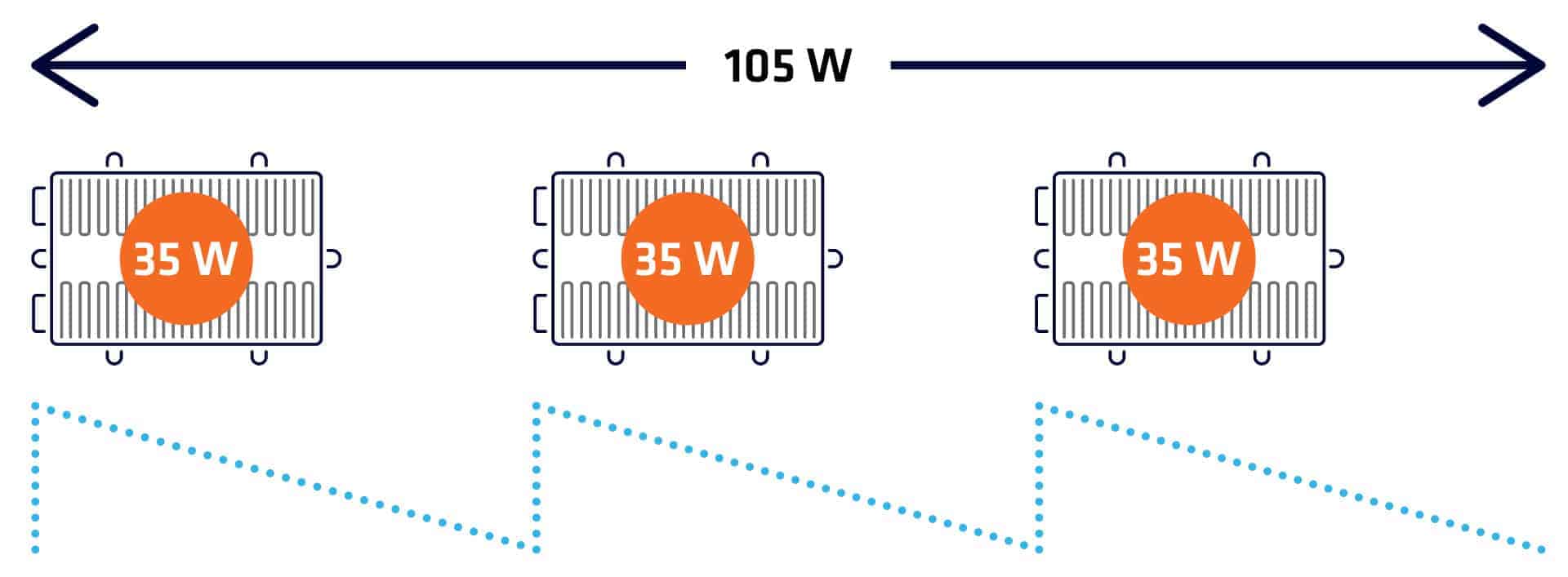Distributed Gain Architecture
Distributed Gain Architecture (DGA) is designed to help operators achieve more for less from their coax network:
- More capacity
- More flexibility
- More reliability
- Less labour
- Less power consumption
DGA gives you the ability to generate more income with less expenditure – more for less.
How is this possible?
A hybrid fiber coaxial broadband cable network is built to transport data and television signals from the headend to a subscriber’s home. As the signal travels through the coaxial cable from the headend it loses strength, so amplifiers are placed along the cable to gain signal and overcome the loss. As both the speed and frequencies go up, even more level is lost and amplifiers need to work harder.
The ratio between the level created by an amplifier versus how much power is required to create this gets worse as the level gets higher. Distributed Gain Architecture uses smaller amplifiers with an extremely high level versus power ratio, making it feasible to cross a certain coax length with only 1/3 of the power consumption versus the traditional way of building networks.

Today’s network: high gain, high power

Distributed Gain Architecture (DGA)
Due to the lower power consumption and more energy efficient components, the amplifier used in DGA generates much less heat. This means there is much less stress in a DGA amplifier, which in turn makes it 10 times more reliable.
An additional benefit of DGA is the signal level and quality. As the gain/power ratio is superior with DGA, the amplifiers are much smaller (the size of an outdoor tap) and therefore can be positioned where needed. This way the areas where intermodulation and noise occur in an amplifier are resulting in much improved signal levels and quality, meaning higher modulation schemes can be used and more data can be pushed through the network.
Research on total cost of ownership (TCO) and capacity shows that 40% more data capacity can be generated for 37% less TCO over 10 years.


